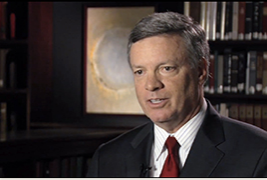A couple of weeks ago, Joe Amato pleaded to be allowed to turn the channel on the U.S. presidential election debates. I sympathize.
“What all this focus on personality obscures are the actual issues the country faces,” he wrote. And that was before the lurid disclosures before the second debate and all the tabloid noise engulfing it.
Although it appears that Hillary Clinton has opened up a meaningful lead in national polls and has a clear path to the Electoral College votes she needs to win the presidency, extreme outcomes, ranging from a Democratic “sweep” of Congress to a surprise October comeback for Donald Trump despite an increasingly fractured Republican party, cannot be discounted.
Sour Politics Across the Developed World
At least we Americans can take comfort that some of our friends are more than matching us in the political-turmoil stakes. We could start with the French and German establishment battling to keep the far right at bay ahead of general elections next year, or Italy’s Matteo Renzi betting the credibility of the euro on a too-close-to-call referendum on constitutional process in December. But the real action has come from the U.K., and its brutal punishment in foreign exchange markets.
Sterling traded in a tight range since its immediate pummeling post-Brexit. The annual conference of the ruling Conservative Party changed all that.
Prime Minister Theresa May outlined a surprisingly interventionist plan with a distinctly economic-nationalist flavor that would preclude membership in the single market. But then finance minister Philip Hammond insisted that continued membership was not ruled out. The mixed messages sent sterling on a 7% tumble to $1.21, complete with a “flash crash” on October 6.
A Different Direction of Travel in Emerging Markets
Since returning from the Annual Meeting of the International Monetary Fund and World Bank Group last week, Brad Tank has been talking about the contrasting moods of the (upbeat) central bankers of the emerging world and their (exhausted) peers in the developed world. That raises a question: With all this souring of politics going on in the developed world, perhaps investors should look again at emerging markets?
We expect these markets to suffer political uncertainty, and they don’t disappoint. Hotheads talk of an attempted coup in the U.K., but Turkey had a real one. Rodrigo Duterte of the Philippines reminds us that the emerging world has its share of interesting political characters. Vladimir Putin is hardly a friend of the post-Cold War settlement. The death of King Bhumibol Adulyadej last week could exacerbate tensions in Thailand.
But it’s the starting point and the direction of travel that counts. In some of the most important markets, new reforming leaders such as Narendra Modi, Michel Temer and Mauricio Macri are changing the narrative.
I drew attention to some of these trends back in April, when we were still edging cautiously into emerging markets and waiting for fundamentals to prove themselves. Since then, emerging-world growth has continued to outstrip that of the developed world, commodity prices have stabilized and currencies have recovered.
Emerging Markets Still Offer a Risk Premium
Despite this, the emerging world is still valued as if it were the riskier destination for your capital.
The forward price-to-earnings ratio on the MSCI Emerging Markets Index is currently around 13 times, compared to 17 times for large-cap U.S. equities. In bond markets, nominal yields have started to rise in the developed world but could go much further—real yields still average just 0.5%. In the emerging world, the average real yield is 3%. Relatively high risk is still priced into nominal yields even as currencies recover and inflation eases.
It’s this combination of easing financial conditions and increasing policy latitude that has the emerging world’s central bankers feeling upbeat. It’s a long way from the dilemma facing the Federal Reserve and its peers—and it provides a solid macroeconomic foundation for investors in emerging market assets.
To be sure, if toxic politics lead to toxic economics in the developed world, the fact that the emerging world increasingly trades with itself will likely provide only partial shelter. Moreover, intra-emerging market demand may be weaker than we all thought, if the 10% year-over-year drop in China’s exports revealed last Thursday is any guide. Overall, however, the direction of travel in politics, governance and economic fundamentals, paired with the high degree of risk still being priced into valuations, builds a compelling case for emerging country stock and bond markets over those of the developed world.
Neuberger Berman’s CIO insight by Erik Knutzen




